
The Silent Note
October 1, 2014
Do you remember the phrase in that old Coca Cola commercial, “The pause that refreshes?”
It did nothing for me at the time because I don’t even like the drink. Still, the commercial initiated something quite unintended. Rather than coaxing me to go around the corner and buy a bottle of Coke, the single word “pause” in the ad somehow made me think of music. A pause, more commonly referred to as a rest—that empty space large or small in between notes—is a vital if literally unheard element of music.
Composers write rests into their music for a reason but it’s tempting to be dismissive about those empty spaces. After all, they are merely the absence of sound—a filler, a vacuum, a mini black hole in which one can get lost. Students, especially, often shortchange a rest’s duration in their eagerness to continue playing. I imagine they’re thinking it’s better to get across that uncomfortable non-sound without too much fuss or attention.
But is a rest really a non-sound? The term seems to diminish and trivialize an important part of music—even at times the most important element in a musical statement. Or as Coca Cola would say, the pause that refreshes. Or dramatizes. Or allows for a transition from one mood to another. In its most basic form, a rest provides something akin to the time needed for a singer to take another breath.
Music is littered with rests. Something as commonplace as the Happy Birthday Song has two mini-rests at its beginning. Birthday celebrations wouldn’t be ruined without them but the song would certainly sound odd, even breathless, you might say.
In a slightly more serious vein, think of Schubert’s Death and the Maiden String Quartet without the four rests separating the initial groups of notes that announce the ominous nature of the music. One could argue that these rests are as important as the notes themselves. Perhaps it would be wiser to call them silent notes rather than anything else.
Or what about Haydn’s “Joke” String Quartet? The joke at the end of the last movement from which the quartet gets its name is all about the rests, the stops and starts, the false endings as the work comes to its conclusion. How these rests are handled separates the quartets that know how to tell a joke from those that don’t. I would ask any group contemplating a performance of this quartet whether they know how to deliver a punch line successfully.
The sheer heft and feel of the rest in music, that elusive apparition, is hinted at in a stanza from “Thirteen Ways of Looking at a Blackbird,” a poem by Wallace Stevens:
I do not know which to prefer,
The beauty of inflections
Or the beauty of innuendos,
The blackbird whistling
Or just after.
Actors know all about rests. They must if they hope to have any impact. Consider Shakespeare’s famous soliloquy, “To be or not to be? That is the question.” Not enough time taken between those two sentences and they fall flat. Too much time and they become bland and even incoherent. But exactly how much time in between any two words or for that matter any two notes is exactly right? That is the magic inherent in every rest that musicians, actors, lovers, and politicians spend their lives searching for.
Comedians especially depend on rests. My friend, Lincoln Mayorga, was at one time the pianist and arranger for the rock and roll group, The Four Preps. He told me that they were once the opening act in a touring variety show, followed by the great comedian George Burns. The Four Preps mainly sang, but they mixed in a little comedy. In the song “Up Lazy River” one of the group shrieked and fell into another’s arms after the line, “Throw away your troubles, dream a dream of me.” It always got a laugh.
Burns, standing in the wings and preparing to go on stage, witnessed this little scene night after night. As the group came off stage one evening, Burns made a suggestion. Wait two beats before you shriek and you’ll get a bigger laugh, he told them.
Sure enough, the next night, acting on Burns’s advice, they got twice the laugh. As they walked off the stage, Burns refused their thanks. I was wrong, he said. Tomorrow night, wait only one beat and you’ll bring the house down.
And that is exactly what happened.
If George Burns were still alive today, he of all people might be able to help a young quartet successfully deliver the joke of Haydn’s “Joke” String Quartet. I can almost hear him saying, “No, no. Wait one beat instead of two and you’ll bring the house down.”

Subscribe
Sign up to receive new stories straight to your inbox!








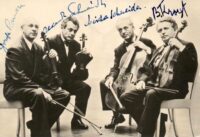
























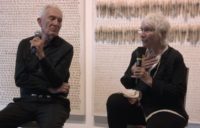



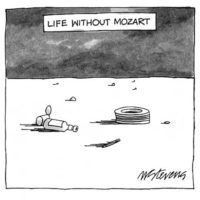















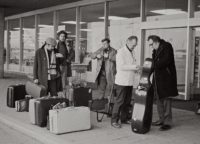



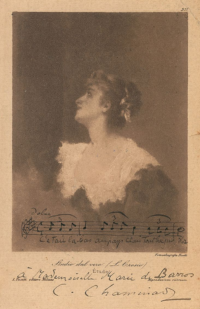











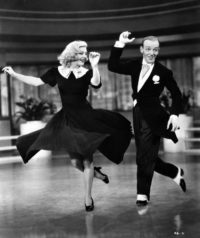







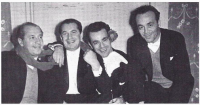
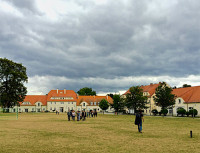


















































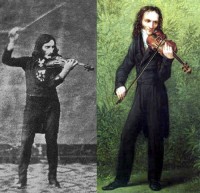



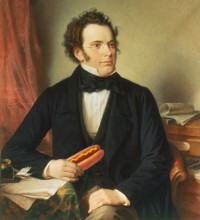

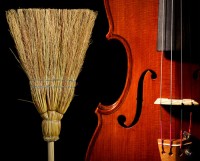





























Comments
And think of the “rests” or spaces inherent n the visual arts. I’ve always been interested in this subject and how it applies to most everything. Thanks, Arnold!
A very interesting and sadly-neglected subject. One teacher I had would make us listen closely to each silence and sometimes would ask us to comment on its quality. Yes, pauses and timing were the secret of George Burns’ comic genius.
Thanks for the wonderful story, Mr. Steinhardt. I always learn something from reading your posts – until today I hadn’t heard of Haydn’s “Joke” Quartet but will now seek it out for a listen. I love the way you refer to a rest as a “silent note”, and had never thought of it this way.
Thanks again!
Thank you so much! I promise to be more careful with the “silent notes”, I am learning a lot for your posts Dr. Arnold. I wish I could meet you some day. I wish you the best.!
Dear Arnold,
You put the subject of “silences”
(as the french call” rests ” ) so eloquently.
I will pass this on to my students and am very grateful to you for writing this. Thank you ! I talk about this all the time in my teaching. All the very best, martha
A beautiful concept. I’m not a musician — just a listener, but the pause for me allows me to take it in, to feel, and to reflect what I’m hearing, feeling. Just that pause, a second or two, adds a special affect that has powerful impact that allows the listener to take it all in.
Curious that you mention the “rest” issue here with my quartet performing Dvorak;s op. 61 Adagio with the huge and pregnant GP… 4.5 quarter beats. The viola and cello waiting to turn their page, the violins frozen; nobody moves. Very tough for the leader to hold the world in his bow and wait and wait until the perfect moment. One breath too long and the moment is lost, the movement ruined.
This one is outstanding!
It is, truly, all about timing, about placement. Treading on rests is at least as big a problem as poor intonation!
My late husband (Earl Kim) used the phrase “playing the rests well” as one of his assessments of a fine performance.
My friend Dick Hadsell calls attention to this Wiki reference: http://en.wikipedia.org/wiki/List_of_silent_musical_compositions
Now what would a quodlibet of these ‘sound’ like?
Cheers!
I really liked your site. Thanks
http://yahoo.com
Leave a Comment
*/